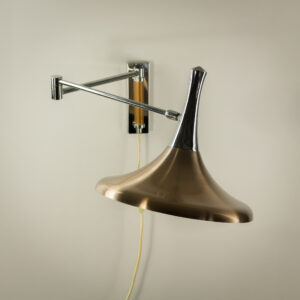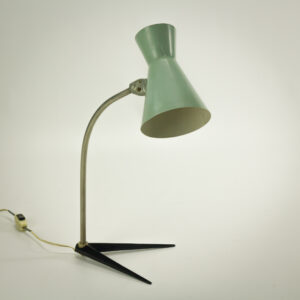Louis van Teeffelen sideboard for WéBé
Louis was born on September 26, 1921 in Beneden-Leeuwen, the second son of Peter van Teeffelen and Anna van der Sterren. His father has a blacksmith shop with a hardware store, but dies early. After primary school, Louis attends vocational school in Tiel. Louis is 19 years old when war breaks out. For that reason and because of the family situation, training at a higher vocational school or academy is not an option for Louis. He studies in the evenings for furniture design and technical manufacturing at the Royal PBNA (Polytechnical Bureau Netherlands Arnhem).
Just before the Second World War until 1952, he worked for two furniture manufacturers in Gelderland, including Salet’s Eerste Machinale Meubelfabrieken. From 1952 he has been an independent entrepreneur with all the ups and downs of entrepreneurship.
From 1955 to the end of 1967 he is the chief designer of furniture factory Walraven en Bevers, later known as Wébé. It is a period in which this factory produces high-quality furniture in teak or rosewood and sometimes in walnut and wenge. At that time it was one of the largest furniture factories in the Netherlands.
In the beginning, Louis designs furniture with a form and language that leans heavily on the furniture style before 1940. From the late 1950s, Louis’s designs have been inspired by Scandinavian aesthetics. Louis develops his own style; his ‘hand’ can be unmistakably recognized. His designs are organic in nature with sculptural elements, have phenomenal seating comfort and are very practical. An example is the ‘wing’ lounge chair and the modular wall system. The finely lined coffee tables show that he also knows the aesthetics of Japan. Of his sculptural elements, the “smile face” handles are the most typical. He designs an endless number of dining rooms, cabinets, television tables, desks, sofas (settees), armchairs and bedrooms.
In the early sixties, Louis searched for a functional and artistic combination of wood with other materials. This experiment resulted in designs for cupboards and tables incorporating ceramic tile pictures by Jaap Ravelli, a ceramist from Valkenburg (ZH) and mosaics of probably glass paste (Graniver) from Glasfabriek Leerdam. In the mid-1960s, interest in teak furniture in the Netherlands declined. Louis’s designs become tighter in shape. Louis’ designs are also developing along with this trend. In the late 1960s, Wébé focused on the demand for oak furniture. The factory does not show itself to be a trendsetter, but a trend follower with a fine nose for upcoming markets. Sketch designs by Louis have been found of furniture in the oak style that can be recognized in a folder by Wébé from the 1970s.
In 1967, Louis developed rheumatoid arthritis. The disease is progressive, so that he can design and move less and less. Louis suffers greatly from this circumstance, in which he can no longer use his creative talents and ambitions. Fifty years old, Louis dies of heart failure on April 30, 1972 in his native village.
This cabinet is from the sixties period with the Ravelli tiles incorporated in the doors and a glass interior in the flap door.
The cabinet is in very good condition, appropriate for its age and use.













